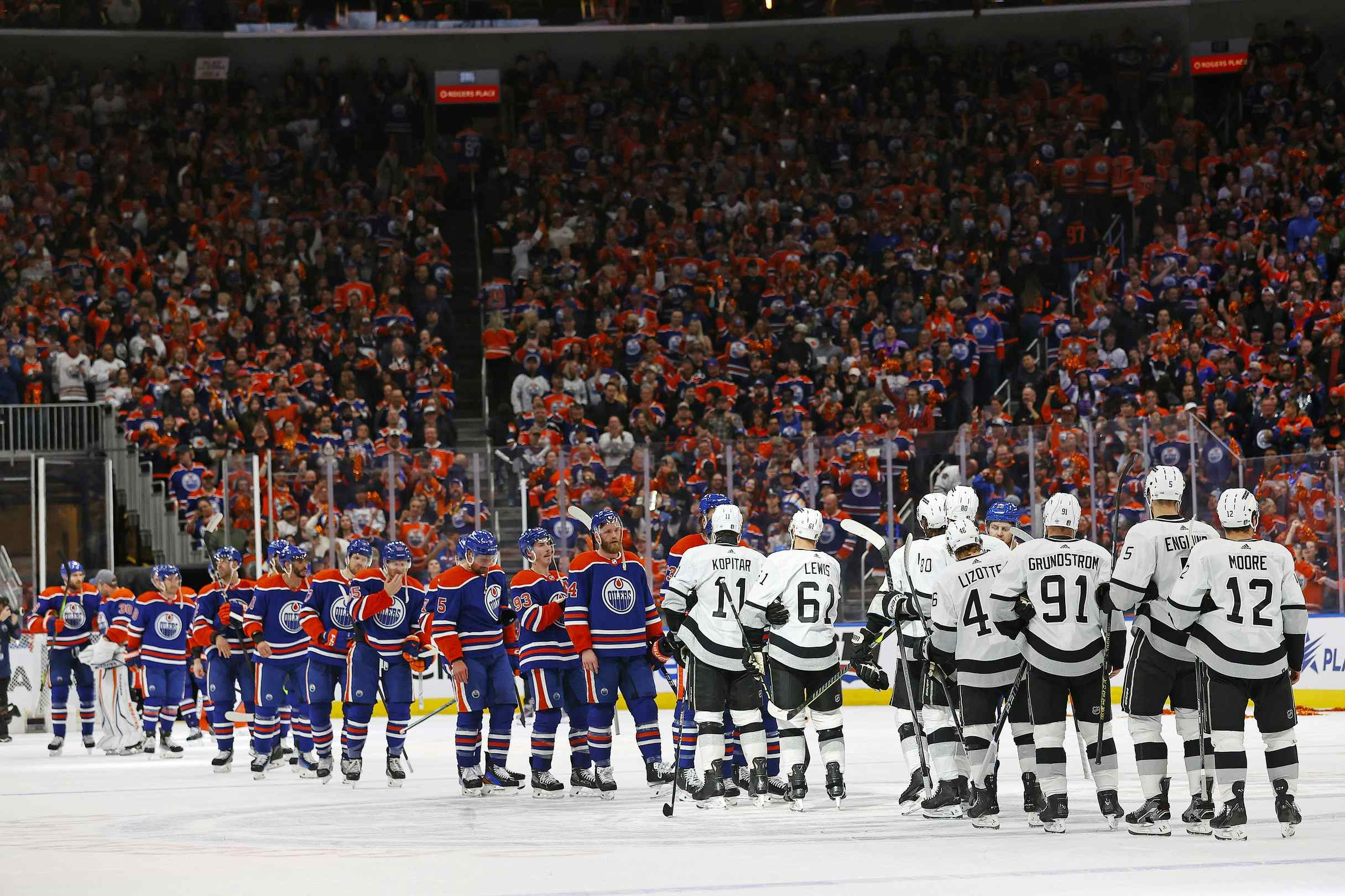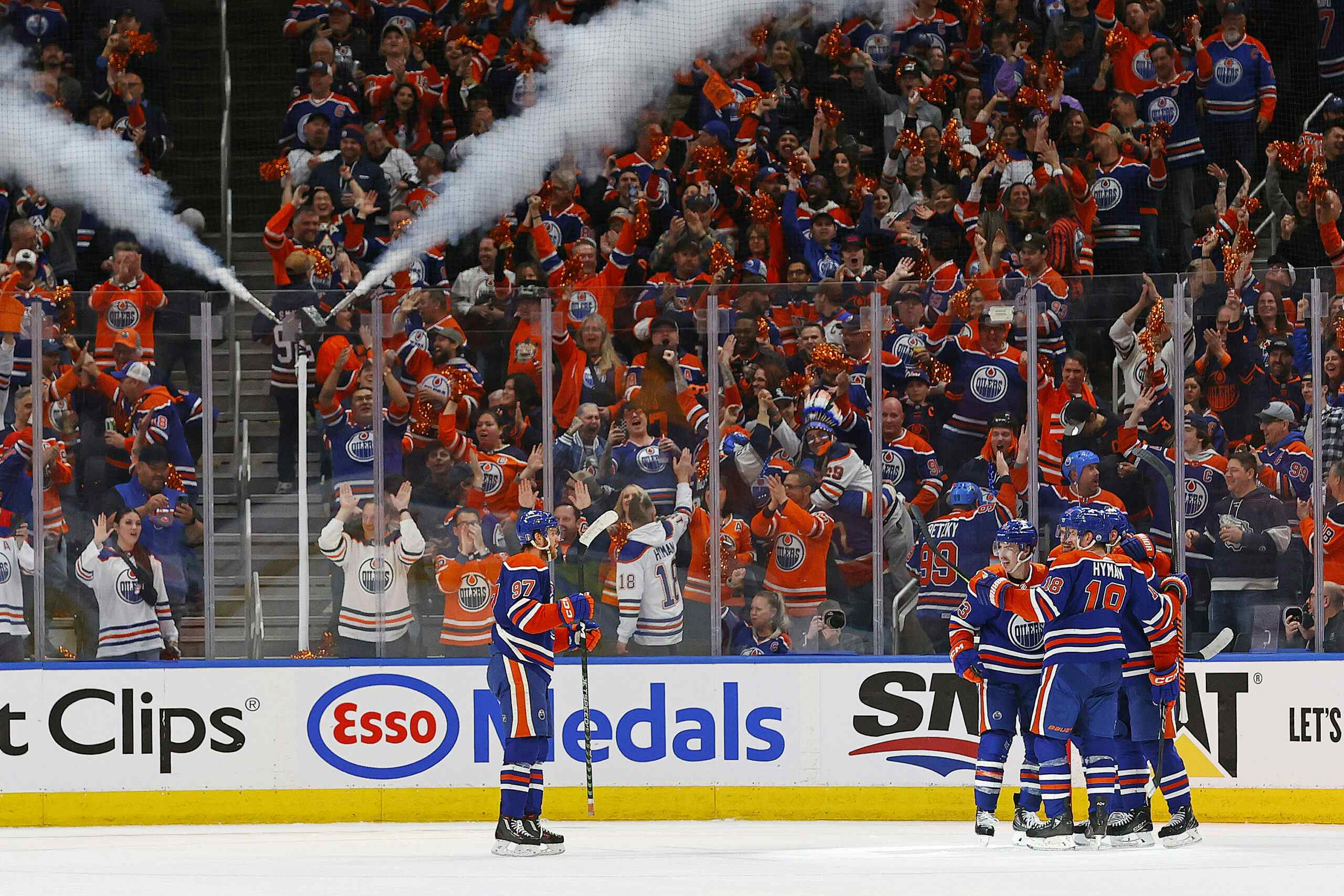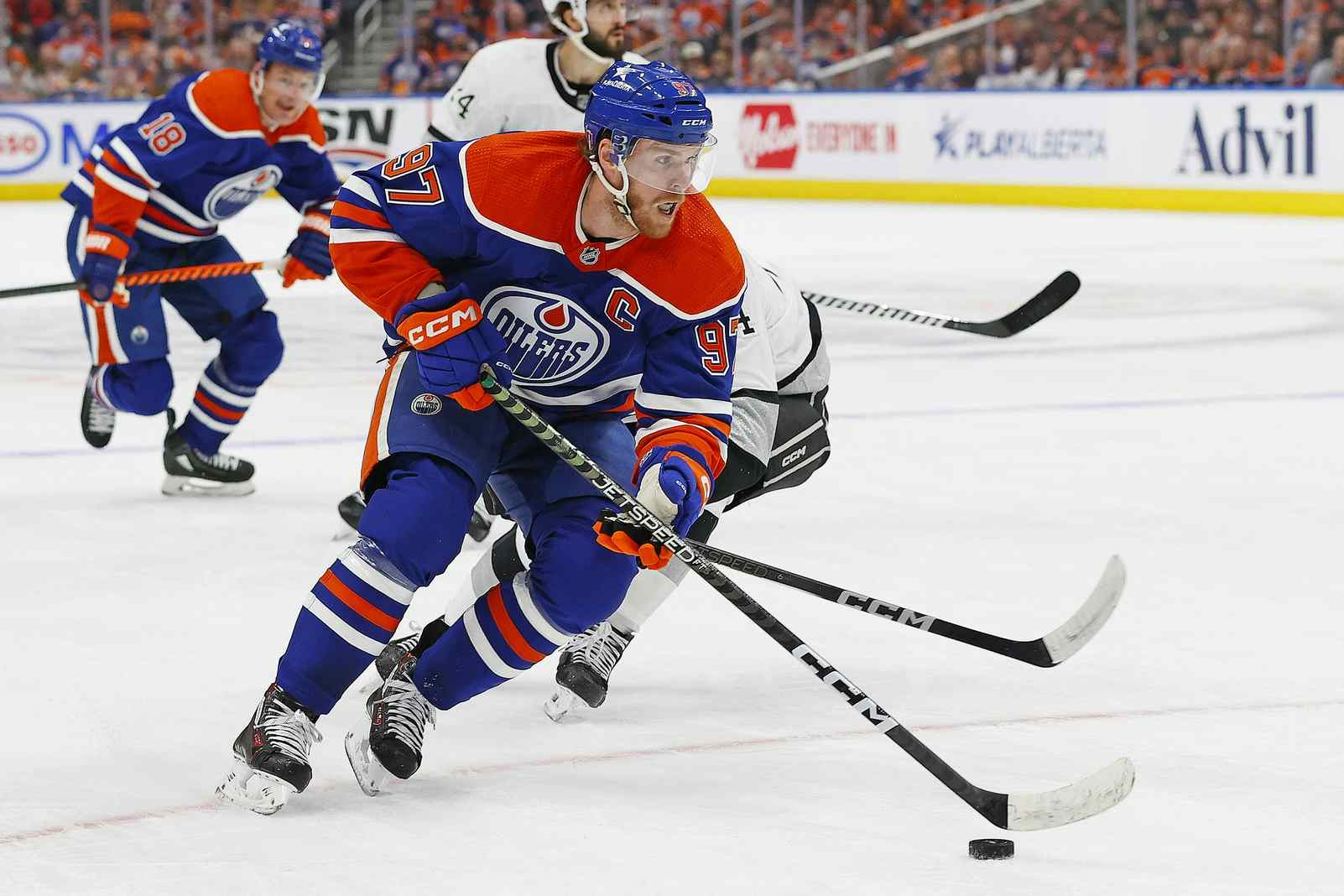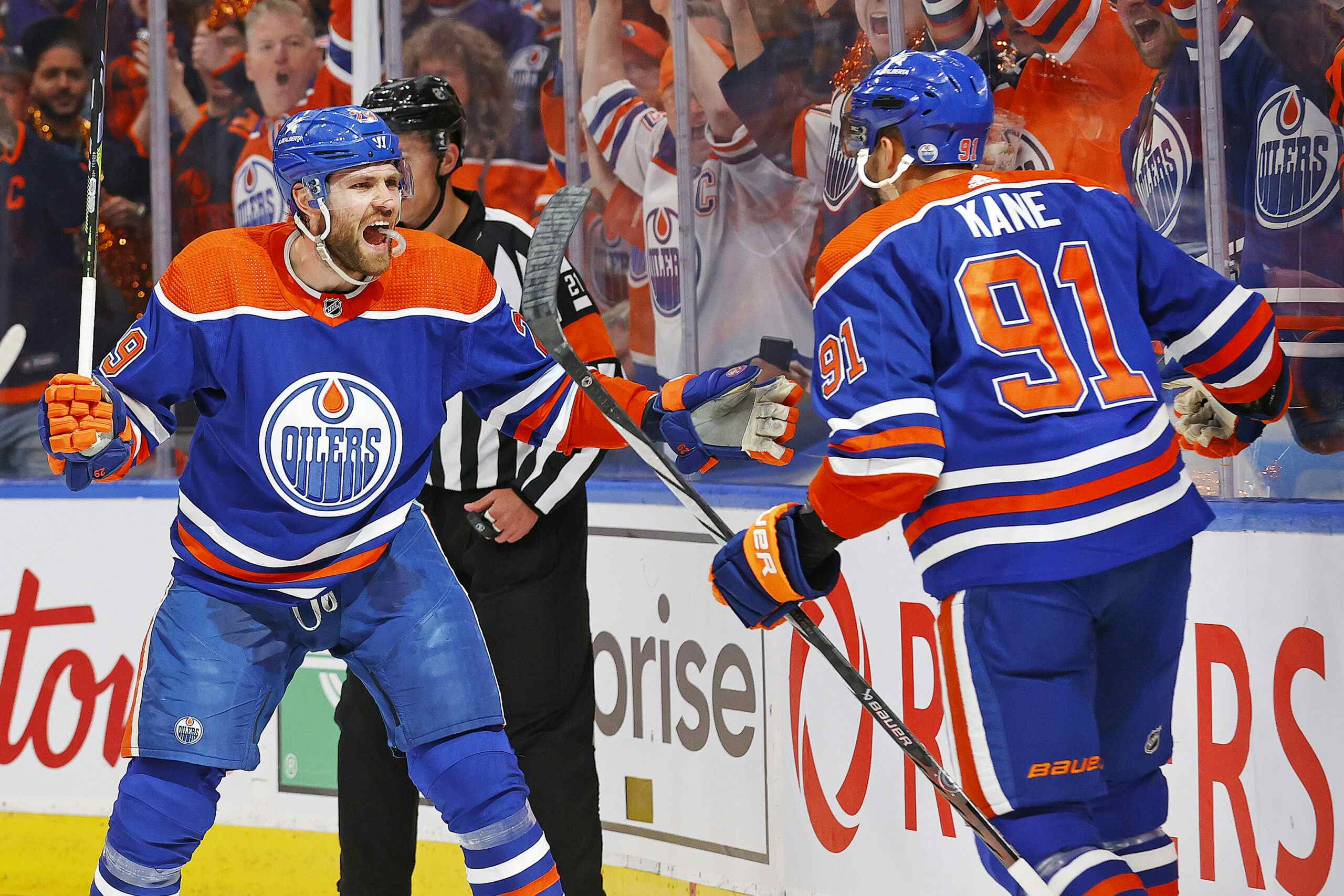Laurent Brossoit’s usefulness hindered by infrequent starts
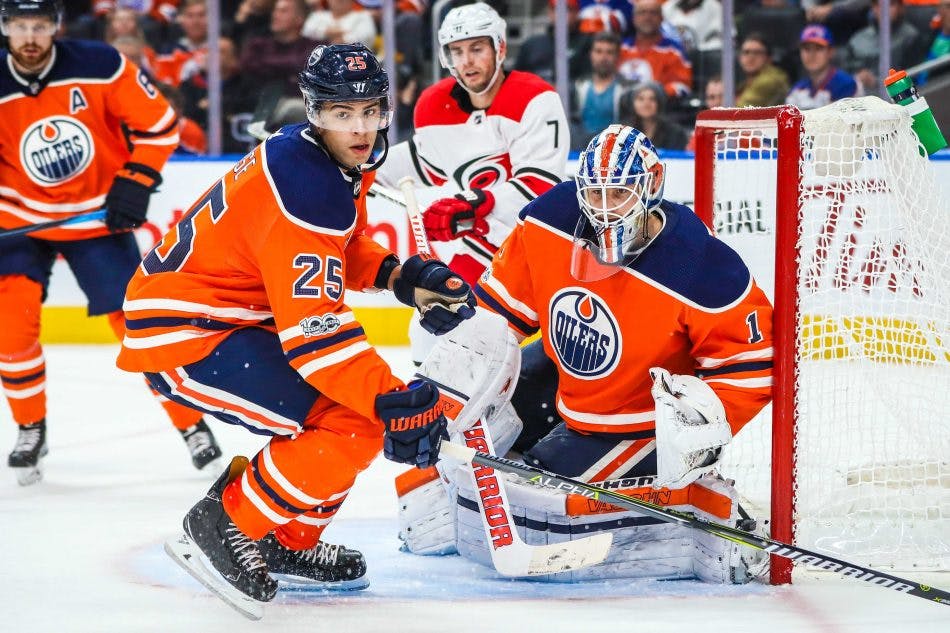
On Sunday evening, Laurent Brossoit played in his fourth regular season game of the year for the Edmonton Oilers.
In it, he made just 18 saves, but allowed just one goal; he and the Oilers saw the Washington Capitals fail to hit 20 recorded shots through regulation and overtime, falling eventually in the shootout after holding their opponent scoreless for nearly the entire game.
It’s frustrating to watch the game end that way for Brossoit for a number of reasons.
The Oilers backup allowed just one goal on the night, when Dmitry Orlov found the back of the net 5:14 into the third period.
The goal wasn’t entirely blameless on his part – a poor angle left a good portion of the net open for Orlov – but with a lapse in defensive coverage on the tally, it certainly wasn’t fully on him.
He’ll still go home without his first recorded win of the season, though, stretching his overall NHL record to just 4-7-2 after 18 games under his belt.
What makes it far more frustrating, though, is that a win would have made it much harder to continue sitting him.
That’s really, truly too bad. The Oilers could use a bit more Brossoit in net.
PRACTICE MAKES PERFECT

Feb 21, 2017; Tampa, FL, USA; Edmonton Oilers goalie Laurent Brossoit (1) makes a save against the Tampa Bay Lightning during the second period at Amalie Arena. Mandatory Credit: Kim Klement-USA TODAY Sports
Last season, in a fit of frustration, Arizona Coyotes goaltender Louis Domingue attributed his poor play to a lack of game time.
“I play once a month, and it wasn’t good enough. So I have zero answer,” he said in February of last year, alluding to some of the problems a backup goaltender can have getting past the bad games.
His head coach, Dave Tippett, echoed the sentiment – and after a few regular starts, the number two finished the year flying high.
It’s worth considering whether those increased starts could help Brossoit.
His own numbers this year have been a letdown.
Through four games, he sits at a .881 save percentage in all situations, allowing eight goals on just 67 shots. Although he was pristine in his first appearance of the year – stopping all 19 shots he faced in an eventual loss to the Vancouver Canucks – he allowed two goals on eight shots against Ottawa a month ago and five goals on 21 shots three nights later.
Until Sunday night, he hadn’t started since that October 17th tilt against the Carolina Hurricanes.
It’s a calculated risk, of course, to presume that a backup’s struggles are simply the result of sporadic starts. After all, increased workload for Jonas Gustavsson didn’t work out in any of his final NHL seasons – and for Edmonton, taking a chance on him cost the team dearly last year.
Brossoit, though, has good numbers in the past that hint at better days to come.
His first NHL games, played just 78 days before the Oilers selected Connor McDavid first overall in 2015, was about the most Oilers welcome to the NHL he could have received.
Peppered with 51 shots by the San Jose Sharks that night, he stopped a whopping 49 pucks and posted a .961 save percentage – and naturally, Edmonton lost the game.
He wouldn’t play again until the following year, when a five-game sample size yielded just a .873 save percentage, but he elevated his stats to a .928 save percentage in eight games last season after taking over as backup through the spring campaign.
He has yet to play enough at the NHL level to truly evaluate what he can bring to the Oilers, but his ability to keep them in some disastrous games in the past – and his strong AHL performances in the last few years – suggest the talent is definitely there.
And, at this point, it’s likely to hurt the team more to not play him.
STARTER’S EXHAUSTION

Jan 21, 2017; Calgary, Alberta, CAN; Edmonton Oilers goalie Laurent Brossoit (1) celebrate win with center Connor McDavid (97) and center Mark Letestu (55) after the game against the Calgary Flames at Scotiabank Saddledome. Edmonton Oilers won 7-3. Mandatory Credit: Sergei Belski-USA TODAY Sports
I stand by my sentiment last spring; I thought then (and still think now) that aside from Corey Crawford, Cam Talbot has been the biggest Vezina snub in the last few years.
Part of what earned him such strong credence in my mind, of course, was his ability to maintain league-average numbers for a starter, despite playing in a whopping 73 games during the regular season.
It was impressive, for sure. Vezina-worthy, as a matter of fact.
Sustainable, though? Not all that likely – and not something Edmonton should be testing out, to be sure.
Yet here we are.
Through the first 17 games of the season, Talbot has appeared in 15 so far, only staying out of the crease for two full games (the one against Carolina and the one Sunday night). He’s on pace to make 73 appearances once again this year, bringing him to a whopping 146 games played in the last two years.
For perspective, that’s 14 more games than Devan Dubnyk played in the 2015-16 and 2016-17 seasons combined, and there are already rumors circling the league that Minnesota wore him into the ground with that workload.
Braden Holtby? Only 129 games in his last two full seasons combined. Even Tuukka Rask, also under scrutiny for workload wear and tear, only made 129 combined starts in the last two years.
It’s playing with fire for Edmonton to put Talbot in goal so often.
Even the very best NHL goaltenders can only handle so much game action over the course of a season. The modern game is brutal on hips, knees, and groins, requiring increasing off-ice TLC to keep the league’s best in net for lengthy careers.
In theory, even the healthiest goaltenders, the ones with the most optimal biomechanics, can only handle so much strain on those areas before it starts to affect their play.
That’s not even getting into the mental fatigue of playing 73 games a year (not counting the postseason, which only exacerbates the problem).
Part of the reason goaltending statistics are still such an inexact science is because the position is as much mental as it is physical. Tracking, trajectory, and focus are all crucial parts of a goaltender’s arsenal; while a player can sometimes get away with skating a game at 80% physical condition, a goaltender at 80% mentally gets pulled just minutes into an outing.
It’s certainly possible to remain capable of peak performance in that area for 73 games in a single season, but the risk is the same as with the physical game; the more frequently a goaltender is overworked, the more he’ll start to show it.
Edmonton, presumably, needs Talbot to remain excellent for the next handful of seasons – if not even farther out.
If they continue to play him so much, it certainly isn’t likely to help him in the long run.
So what’s the best course of action?
Obviously, the team doesn’t want to bench Talbot – who has been turning his game around in the last few weeks – for the sake of getting Brossoit’s numbers up.
They do, though, need to keep him as healthy as they possibly can. Perhaps, going a month in between appearances for Brossoit isn’t quite the way to do that.
They alluded to a more even split last season. Hopefully, that’s in the cards very soon; if not, it’s hard to imagine it won’t start showing before long.
Recent articles from Cat Silverman

